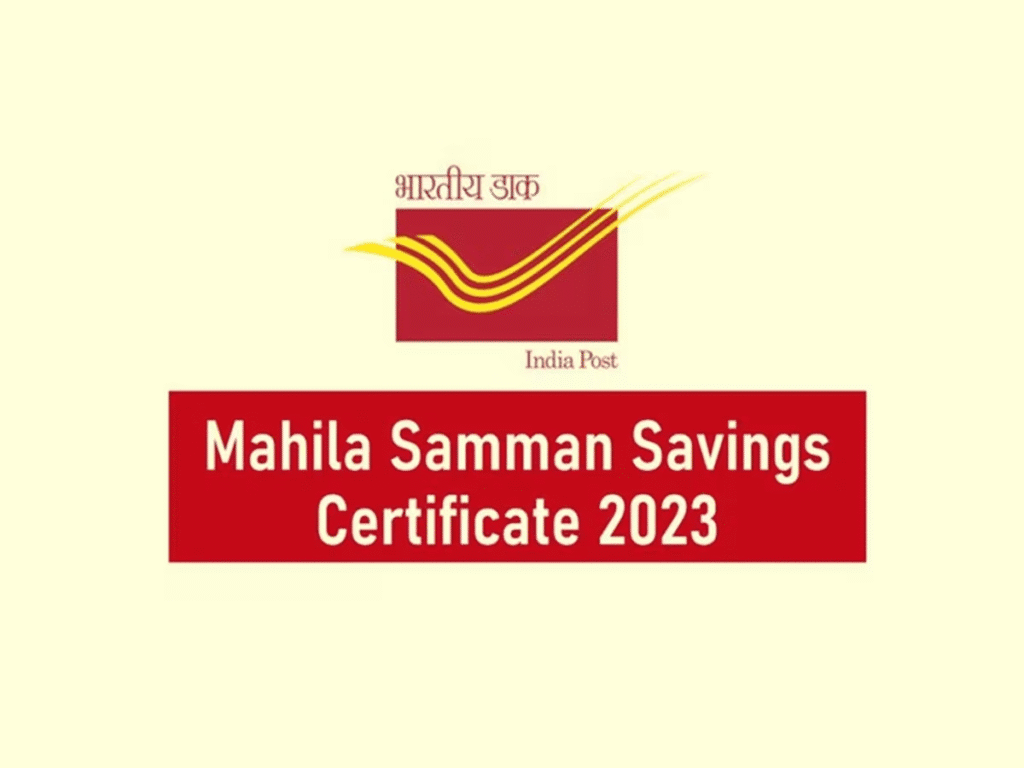
The Mahila Samman Savings Certificate is a government-backed savings scheme designed specifically for women in India. This initiative aims to empower women financially by providing them with a secure and attractive investment option. With a competitive interest rate and flexible investment amounts, it offers a viable way for women to build their savings over time.
Through this scheme, women can invest as little as INR 1,000 and benefit from a lock-in period that ensures their funds are saved for future needs. The structure of the certificate promotes financial independence, encouraging women to take an active role in managing their finances.
As awareness about financial empowerment grows, the Mahila Samman Savings Certificate stands out as a significant step towards fostering economic stability among women. This initiative not only offers a safe avenue for savings but also supports broader goals of gender equality in financial matters.
Understanding Mahila Samman Savings Certificate
The Mahila Samman Savings Certificate is designed to empower women financially while offering attractive savings options. This initiative caters specifically to women’s needs, promoting their financial independence through various benefits and incentives.
Purpose and Benefits
The Mahila Samman Savings Certificate aims to encourage savings among women and help them achieve financial security. This scheme provides a safe investment avenue, offering competitive interest rates.
Key benefits include:
- Attractive Interest Rate: The interest rate generally exceeds traditional savings accounts, enhancing returns on investment.
- Safety and Security: The government backs these certificates, minimizing investment risks.
- Flexibility: Women can invest amounts that suit their financial situations, promoting accessibility.
- Financial Independence: Encouraging women to manage their finances contributes to overall empowerment.
Eligibility Criteria
To invest in the Mahila Samman Savings Certificate, certain eligibility criteria must be met. It is exclusively available for women, reinforcing the initiative’s focus on female empowerment.
Criteria include:
- Age Requirement: Investors should typically be at least 18 years old.
- Identity Verification: Valid ID proof may be required at the time of investment.
- Resident Status: Only resident Indian women can apply, ensuring that the benefits stay within the country.
Investment Details
The investment structure of the Mahila Samman Savings Certificate is straightforward and user-friendly.
Key details include:
- Minimum Investment: The minimum investment is often modest, making it accessible for many.
- Maximum Limit: There might be a cap on the maximum investment to encourage wide participation.
- Duration: The maturity period typically ranges from 5 to 10 years, providing long-term savings options.
- Interest Payments: Interest is usually compounded annually, allowing investors to benefit from accrued interest.
This certificate serves not only as a reliable saving tool but also as a step towards promoting women’s financial literacy and independence.
Financial Inclusion and Empowerment

Financial inclusion and empowerment initiatives aim to enhance access to financial services for individuals, particularly women. Programs and loans designed to support various needs contribute to improving financial literacy and independence.
Pradhan Mantri Awas Yojana – Urban – PMAY(U)
The Pradhan Mantri Awas Yojana – Urban (PMAY(U)) is a pivotal program designed to provide affordable housing in urban areas. Under this scheme, beneficiaries can receive housing loans with lower interest rates, which are accessible even for those with moderate incomes.
This initiative significantly aids women by facilitating home ownership, thereby enhancing their economic status. The scheme offers subsidies on home loans, making it easier for families to finance their own housing.
Key features include:
- Interest Subsidy: Up to 6.5% for eligible borrowers.
- Loan Tenure: Flexible repayment options, extending up to 30 years.
Gramin banks may also offer tailored loans through this scheme with competitive interest rates, furthering access to home loans.
Bakri Palan Loan
The Bakri Palan Loan scheme supports individuals involved in goat farming, providing them with the necessary financial resources. The initiative primarily aims at empowering rural women and enhancing their income sources through livestock farming.
This loan typically covers purchase costs, veterinary services, and feed. Financial institutions may provide attractive terms for repayment, encouraging participation in this scheme.
Key aspects include:
- Loan Amount: Varies based on the number of animals.
- Interest Rates: Often competitive, with provisions for lower rates for women.
Women can leverage this loan to not only improve their livelihoods but also gain financial independence.
Annasaheb Patil Loan Apply Online
The Annasaheb Patil Loan is an initiative that encourages financial inclusion among marginalized communities, predominantly in Maharashtra. This loan aims to support various agricultural and small business ventures.
Applying online streamlines the process, reducing barriers to access for applicants. Eligible individuals, especially women, can receive funds to scale their farming activities or to start new ventures.
Important features include:
- Loan Purpose: Agriculture, small businesses, or allied activities.
- Flexible Repayment: Options based on annual income and cash flow.
This initiative emphasizes reducing dependency on informal loans, ultimately promoting self-reliance.
Farmer Loan Redemption Scheme Uttar Pradesh
The Farmer Loan Redemption Scheme in Uttar Pradesh is structured to assist farmers in clearing debts. This initiative is particularly beneficial for women farmers, helping them regain financial stability and creditworthiness.
Eligibility typically includes farmers who have faced crop failure or economic hardships. The government offers support to ensure that these individuals can clear their loans without further financial distress.
Essential aspects include:
- Loan Coverage: A percentage of outstanding debts may be forgiven.
- Support Mechanisms: Financial literacy programs accompany the scheme to educate participants.
By relieving financial burdens, this scheme empowers women and enables them to invest in productive activities.
Loan Options and Considerations

When evaluating loan options, individuals should explore various types suited to their needs. It’s essential to consider interest rates and terms, as well as how to effectively assess different loan offers.
Loans for Various Needs
Different loan types cater to specific financial requirements. For instance, personal loans are versatile for various expenses, including education or emergencies. They can be secured or unsecured, depending on the borrower’s creditworthiness.
Instant payday loans offer quick cash solutions but often come with higher interest rates. Individuals with bad credit may seek personal loans designed for less-than-ideal credit histories. For specific needs, loans like car loans or handicapped loans address unique circumstances by tailoring eligibility and terms accordingly.
Gold loan options, such as those from Chemmanur, allow individuals to use gold assets to secure funding. Cooperative banks and Gramin banks provide localized support with competitive interest rates, making them accessible for many.
Interest Rates and Terms
Interest rates vary significantly across different loan types and institutions. Typically, cooperative bank loan interest rates are lower due to community-based lending practices. In contrast, daily loan apps may charge higher rates for convenience.
For secured loans, such as gold loans, interest rates tend to be more favorable. Borrowers should examine the Annual Percentage Rate (APR) as it reflects the total cost of borrowing. Loan terms can range from a few months to several years, influencing monthly repayment amounts.
Understanding the terms is critical. Fixed rates provide stability, while variable rates can lead to fluctuations in repayments. Potential borrowers should compare offers from multiple lenders for the best deal.
Evaluating Loan Offers
When evaluating loan offers, clarity is key. Borrowers should analyze the loan amount, interest rate, repayment terms, and any additional fees. A useful practice is to create a comparison chart to visualize different loan options.
In addition, it’s important to read the fine print of any loan contract. Recognition of pre-payment penalties or late fees can save borrowers from unexpected charges.
Assessing the lender’s reputation is also crucial. Choosing institutions like Gramin banks or reputable online platforms can lead to more secure borrowing experiences. Ultimately, informed decision-making will lead to better financial outcomes.
Credit and Financial Health

Credit health plays a crucial role in financial stability. It influences the ability to secure loans and favorable interest rates. Understanding and improving credit scores are essential steps toward achieving financial goals.
Understanding Credit Scores
A credit score is a numerical representation of an individual’s creditworthiness. It typically ranges from 300 to 900. A score above 750 is often considered excellent, while scores below 600 can be problematic.
Factors affecting credit scores include:
- Payment History: Timely payments boost scores.
- Credit Utilization: Keeping usage below 30% of available credit is advisable.
- Credit History Length: A longer history positively impacts scores.
Financial institutions, including SBI, offer services to check CIBIL scores for free. Regular monitoring helps identify areas for improvement and ensures accuracy.
Improving Your Credit Score
Enhancing a credit score involves strategic actions. Regularly checking credit reports enables individuals to dispute errors. Paying bills on time is vital; even one late payment can harm scores significantly.
Reducing outstanding debt is another effective approach. He or she should aim to lower credit card balances.
Here are additional tips:
- Establish a budget to manage expenses.
- Avoid opening multiple credit accounts at once.
- Consider secured credit cards for rebuilding credit.
Consistency in these practices can lead to a noticeable improvement in credit scores over time, often within a few months.
Investment and Savings Tools

This section will explore two vital investment and savings options: gold as an investment and retained earnings in business. Each option has unique characteristics and implications for enhancing financial stability.
Gold as an Investment
Gold is often regarded as a safe haven asset. Its value tends to rise during economic uncertainty, making it appealing for risk-averse investors. To determine if gold is a good investment, factors such as market trends, demand, and historical prices should be considered.
Investors can buy gold in several forms, including:
- Physical gold (coins, bars)
- Gold ETFs (Exchange Traded Funds)
- Gold mining stocks
Understanding how to evaluate gold investments includes monitoring price fluctuations and utilization in jewelry and electronics. This multi-faceted approach can guide informed decisions about acquiring gold.
Retained Earnings in Business
Retained earnings are critical for a company’s growth strategy. They represent the portion of net income not distributed as dividends, thus allowing businesses to reinvest profits. Calculating retained earnings involves using the formula:
Retained Earnings = Previous Retained Earnings + Net Income – Dividends Paid
This metric provides insight into a company’s financial health and its ability to fund operations or new projects.
Retained earnings can be allocated toward various purposes such as:
- Expanding production capabilities
- Research and development
- Paying down debt
Effectively managing retained earnings allows businesses to harness growth and improve shareholder value.
Educational Finance
Educational finance encompasses various sources that support individuals in funding their academic pursuits. This includes scholarships, grants, and various loan options tailored for students.
Scholarships and Grants
Scholarships and grants provide vital financial assistance that students do not need to repay. These awards can come from different sources, including educational institutions, government agencies, and private organizations.
Students can explore various scholarship options like:
- Merit-based scholarships: Awarded for academic achievements.
- Need-based grants: Determined by financial requirements.
- Sports scholarships: Provided for exceptional talent in sports.
Programs such as the National Merit Scholarship offer substantial funding to eligible students. Many foundations also provide scholarships tailored to specific fields of study. By researching and applying for these opportunities, students can significantly reduce their financial burden.
Student Loans and Options
Student loans serve as a necessary resource for many pursuing higher education. Institutions like HDFC Credila offer specialized education loans, focusing on higher education and skill development.
Loan options include:
- NBFC Education Loans: Provided by non-banking financial companies with flexible repayment options.
- Personal loans for students with no job: Designed for students who may not have a steady income yet.
Borrowers should compare interest rates, repayment terms, and eligibility criteria across different lenders. Utilizing platforms like JM Financial can provide guidance and facilitate loan applications, ensuring students find suitable financing options for their educational needs.
Credit Card Usage and Strategies
Credit cards can assist users in managing finances and building credit scores. Understanding the different types of credit cards and strategies for wise usage can maximize their benefits and minimize potential pitfalls.
Types of Credit Cards
- Rewards Credit Cards: These cards offer points or cashback for every purchase. Users can redeem rewards for travel, gifts, or statement credits. They are ideal for those who spend regularly and can pay balances in full.
- Secured Credit Cards: This type requires a cash deposit as collateral. They are suitable for individuals with limited or poor credit histories and help in building credit when used responsibly.
- Balance Transfer Cards: These cards attract low or zero interest rates for an introductory period. They are beneficial for those looking to consolidate debt.
- Student Credit Cards: Targeted toward college students, these cards often have lower limits and simplified qualification criteria, aimed at helping young adults establish credit.
How to Use Credit Cards Wisely
Using credit cards wisely involves strategic planning and disciplined practices. Here are several key strategies:
- Pay Balances in Full: This prevents interest charges from accruing and helps maintain a good credit score.
- Monitor Spending: Regularly track expenses to ensure spending stays within budget limits. Mobile apps can aid in monitoring.
- Set Alerts: Users should enable alerts for due dates and spending limits to avoid late fees and overspending.
- Build Credit History: Utilizing a credit card responsibly can build a positive credit history. Timely payments and low credit utilization are crucial for improving one’s credit score.
- Know Terms and Conditions: Understanding fees, interest rates, and rewards can optimize benefits.
By staying informed and managing accounts wisely, individuals can leverage credit cards to improve financial health.
Alternative Lending Solutions
Alternative lending solutions provide options for individuals seeking financial support outside traditional banking channels. This section covers payday loans and non-banking financial companies, highlighting their key features and availability.
Understanding Payday Loans
Payday loans are short-term, high-interest loans typically intended to cover immediate expenses until the borrower receives their next paycheck. They are often available online or at storefront lenders.
Key Points:
- Duration: Typically due on the borrower’s next payday.
- Amount: Loans usually range from $100 to $1,000.
- Approval: Minimal documentation is required; approval can be instant.
In Bangalore, payday loans can be accessed through various lenders, facilitating quick cash solutions for emergencies. Borrowers should be cautious, as the high interest can lead to debt cycles if not managed properly.
Non-Banking Financial Companies
Non-banking financial companies (NBFCs) offer a range of financial services, including loans, without being classified as traditional banks. They cater to diverse financial needs and often provide faster access to funds.
Key Characteristics:
- Types of Loans: Salary advance loans without CIBIL check, rapid loans, and personal loans are common offerings.
- Examples: Northern Arc Capital is notable for its loan app, which enhances accessibility.
NBFCs typically require less stringent credit checks compared to banks, appealing to borrowers with limited credit histories. They contribute significantly to the alternative lending landscape by offering flexible options tailored to individual needs.
